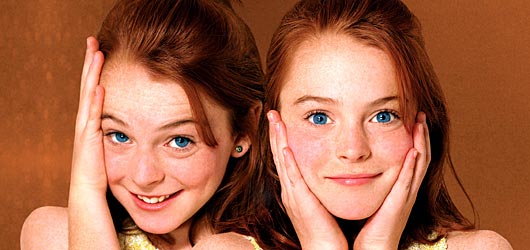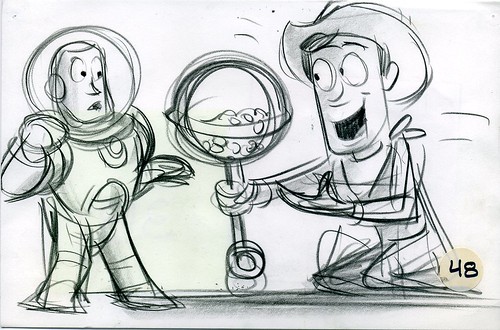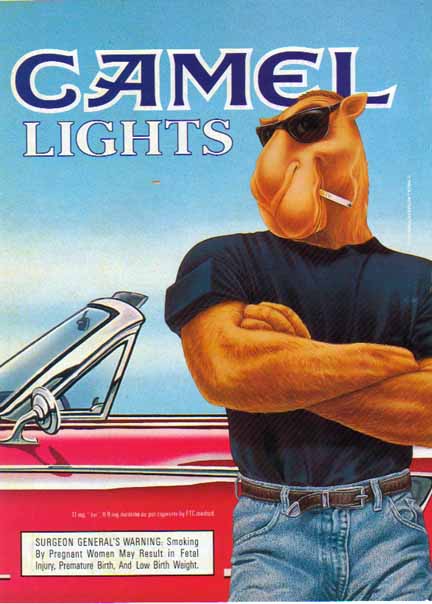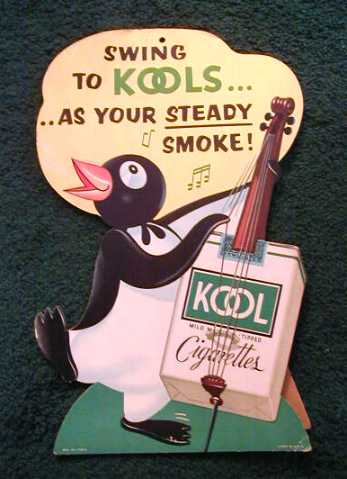
Ah, innocence. Once upon a time, even our most troubled of starlets were just wee littles children struggling to break into the business under the crow-like watch of their obsessive stage parents. Yes, those were the days. When 11-year olds could be goaded and herded to open modeling calls and Jell-O commercial auditions, their parents seeking their vicarious big break. And we wonder why child actors grow up to have all manners of complexes.
Regardless of her current lot in life, back in 1998 Lindsay Lohan was a cute little befreckled redhead with a hell of a British dialogue coach. She starred in the ultimate suspend-your-disbelief-or-exit-the-theater-now movie, playing a set of intercontinental twins separated at birth. A remake of the 1961 original of the same title, The Parent Trap pushed the limits of reason with its endless array of uncanny coincidences. Though the film wasn't winning any medals for sense-making, it had a certain charm in its ludicrousness.
Lohan plays dual roles as Hallie Parker and Annie James, two ordinary 11-year old girls living on either side of the Atlantic ocean. Hallie lives with her single dad (Dennis Quaid as a totally believable DILF), a vineyard owner in Napa Valley. Annie lives with her single mother, Elizabeth (the late talented Natasha Richardson), a glamorous British wedding gown designer. Naturally, neither of the girls knows much about their mysteriously absent second parent, but conveniently has one half of a torn picture of the parent they've never met. I think we can all see where this is going.
Here's where things get a little dicey on straight-up believability. Miraculously, despite the incredibly vast physical proximity, both Hallie and Annie are sent by their respective caretakers to Camp Walden for Girls. In a series of none-so-friendly encounters, the two quickly become rivals, challenging one another to fencing matches and high-stakes poker games. You know, like all 11-year old girls do. The usual.

No one seems to say much about the fact that the two are absolutely, undeniably identical. Sure, the British one's got a stuffy long haircut and the considerably more with-it Northern Californian sports pierced ears, but other than that they're two identical girls separated by an accent. Not one of their friends or counselors remarks to their respective twin pal, "Hey, have you noticed that girl is your twin sister? Maybe instead of feuding, you two should make some effort to sort this whole thing out."
That would be too easy. Then again, the counselors seem notably absent from the film. I can only imagine the liability issues the camp's insurance company faced for lack of proper supervision. For such a reputable camp, the girls seem to
be pretty much on their own.
Continuing on this poorly-supervised theme, the camp staff becomes so unspeakably fed up with their feuding twin charges that they send them to (gasp!) the isolation cabin. Yes, that's right. The punishment at this camp is going to some podunk cabin with the person you hate to duke it out completely unsupervised. Oh, and you get to bring scissors and needles! Makes perfect sense, right? Good, I'm glad you're coming with me on that one.
After a freakishly long period of time without questioning their obvious physical same-ness, the two warm to one another and begin discussing their lives. They find not only that their birthdays are on the same day, but that their half-pictures of their respective mystery parent fit together to form a full picture. Who would've thought? I know I was shocked. A mischevious plan to switch places is quickly hatched and since no adults have stopped in to check on the two, they're able to get away with crazy shenanigans like cutting each other's hair and piercing ears in a horribly painful needle-and-apple manner.
Oh, and I can't leave out my favorite part in which Hallie has to master the handshake that Annie does with her butler. Did I not mention she had a butler? Because she's English, you see. In American movies they all have butlers. Anyway, the spectacular handshake goes a little something like this (performed by Hallie in disguise, who passes the butler test with flying colors):
Both girls do some careful stepping to try to fit in with their newly acquired parents, and generally do pretty well minus a minor misstep here or there. Okay, so Annie's fam is tad flabbergasted to hear her professional-grade assessment of the dinner wine, and Hallie's brood is marginally suspicious of her suddenly proper manners, but all in all things seem to be going pretty okay. That is until we meet the obviously gold-digging Meredith, the pretty young thing dad Nick is planning on marrying. Because in Disney movies we can't just let people make their own major life decisions, the girls decide this would be a great time for an intervention via the good ol' twin switcheroo.
The twins scheme that their parents will have to see each other during the exchange process and will obviously fall madly and deeply back in love. Children with separating parents, take note: just make your estranged parental units switch you with your twin from across the globe in a grand elaborate plan. It's a pretty airtight method.
The twins along with their house-help cohorts plan a recreation of their parents' meeting on a cruise ship. Everything goes swimmingly (boatingly?), with both remarking that they remain hazy on the details of their split in the first place. Unfortunately for Hallie and Annie, their parents don't immediately reconcile their disparate lives in a wave of passionate impulse but rather more mundanely decide the kids can go visit each other from time to time. Obviously a second-tier backup scheme was necessary to clinch this reunion, so the twins refused to tell their parents who was who until they took them on a family camping trip.
The vile Meredith tags along and mom Liz backs out at the last minute, making for an interesting crew. The girls of course do everything in their power to completely and totally piss her off:
Meredith gets so angry over their antics that she demands Nick choose between herself and his daughters, an ultimatum that obviously expels her from the family. Naturally, Elizabeth and Nick get back together, and everyone lives happily ever after. Even the butler and housekeeper, who despite their mildly ambiguous respective sexualities also end up engaged by the end credits. Altogether now: awwww.
Sure, the movie's not necessarily the most realistic story in the world, but it delivers the fantastical goods in pure Disney fashion. The all's-well-that-ends-well predictability makes the movie satisfyingly unbelievable. Overall, it's a fun film, but more importantly it provides us with a handy time capsule of little Linds so we can remember her as she was: cute, freckly, and according to the following interview, loving the attention. Yikes. That certainly sounds like some dark foreshadowing:
Regardless of her current lot in life, back in 1998 Lindsay Lohan was a cute little befreckled redhead with a hell of a British dialogue coach. She starred in the ultimate suspend-your-disbelief-or-exit-the-theater-now movie, playing a set of intercontinental twins separated at birth. A remake of the 1961 original of the same title, The Parent Trap pushed the limits of reason with its endless array of uncanny coincidences. Though the film wasn't winning any medals for sense-making, it had a certain charm in its ludicrousness.
Lohan plays dual roles as Hallie Parker and Annie James, two ordinary 11-year old girls living on either side of the Atlantic ocean. Hallie lives with her single dad (Dennis Quaid as a totally believable DILF), a vineyard owner in Napa Valley. Annie lives with her single mother, Elizabeth (the late talented Natasha Richardson), a glamorous British wedding gown designer. Naturally, neither of the girls knows much about their mysteriously absent second parent, but conveniently has one half of a torn picture of the parent they've never met. I think we can all see where this is going.
Here's where things get a little dicey on straight-up believability. Miraculously, despite the incredibly vast physical proximity, both Hallie and Annie are sent by their respective caretakers to Camp Walden for Girls. In a series of none-so-friendly encounters, the two quickly become rivals, challenging one another to fencing matches and high-stakes poker games. You know, like all 11-year old girls do. The usual.

No one seems to say much about the fact that the two are absolutely, undeniably identical. Sure, the British one's got a stuffy long haircut and the considerably more with-it Northern Californian sports pierced ears, but other than that they're two identical girls separated by an accent. Not one of their friends or counselors remarks to their respective twin pal, "Hey, have you noticed that girl is your twin sister? Maybe instead of feuding, you two should make some effort to sort this whole thing out."
That would be too easy. Then again, the counselors seem notably absent from the film. I can only imagine the liability issues the camp's insurance company faced for lack of proper supervision. For such a reputable camp, the girls seem to
be pretty much on their own.
Continuing on this poorly-supervised theme, the camp staff becomes so unspeakably fed up with their feuding twin charges that they send them to (gasp!) the isolation cabin. Yes, that's right. The punishment at this camp is going to some podunk cabin with the person you hate to duke it out completely unsupervised. Oh, and you get to bring scissors and needles! Makes perfect sense, right? Good, I'm glad you're coming with me on that one.
After a freakishly long period of time without questioning their obvious physical same-ness, the two warm to one another and begin discussing their lives. They find not only that their birthdays are on the same day, but that their half-pictures of their respective mystery parent fit together to form a full picture. Who would've thought? I know I was shocked. A mischevious plan to switch places is quickly hatched and since no adults have stopped in to check on the two, they're able to get away with crazy shenanigans like cutting each other's hair and piercing ears in a horribly painful needle-and-apple manner.
Oh, and I can't leave out my favorite part in which Hallie has to master the handshake that Annie does with her butler. Did I not mention she had a butler? Because she's English, you see. In American movies they all have butlers. Anyway, the spectacular handshake goes a little something like this (performed by Hallie in disguise, who passes the butler test with flying colors):
Both girls do some careful stepping to try to fit in with their newly acquired parents, and generally do pretty well minus a minor misstep here or there. Okay, so Annie's fam is tad flabbergasted to hear her professional-grade assessment of the dinner wine, and Hallie's brood is marginally suspicious of her suddenly proper manners, but all in all things seem to be going pretty okay. That is until we meet the obviously gold-digging Meredith, the pretty young thing dad Nick is planning on marrying. Because in Disney movies we can't just let people make their own major life decisions, the girls decide this would be a great time for an intervention via the good ol' twin switcheroo.
The twins scheme that their parents will have to see each other during the exchange process and will obviously fall madly and deeply back in love. Children with separating parents, take note: just make your estranged parental units switch you with your twin from across the globe in a grand elaborate plan. It's a pretty airtight method.
The twins along with their house-help cohorts plan a recreation of their parents' meeting on a cruise ship. Everything goes swimmingly (boatingly?), with both remarking that they remain hazy on the details of their split in the first place. Unfortunately for Hallie and Annie, their parents don't immediately reconcile their disparate lives in a wave of passionate impulse but rather more mundanely decide the kids can go visit each other from time to time. Obviously a second-tier backup scheme was necessary to clinch this reunion, so the twins refused to tell their parents who was who until they took them on a family camping trip.
The vile Meredith tags along and mom Liz backs out at the last minute, making for an interesting crew. The girls of course do everything in their power to completely and totally piss her off:
Meredith gets so angry over their antics that she demands Nick choose between herself and his daughters, an ultimatum that obviously expels her from the family. Naturally, Elizabeth and Nick get back together, and everyone lives happily ever after. Even the butler and housekeeper, who despite their mildly ambiguous respective sexualities also end up engaged by the end credits. Altogether now: awwww.
Sure, the movie's not necessarily the most realistic story in the world, but it delivers the fantastical goods in pure Disney fashion. The all's-well-that-ends-well predictability makes the movie satisfyingly unbelievable. Overall, it's a fun film, but more importantly it provides us with a handy time capsule of little Linds so we can remember her as she was: cute, freckly, and according to the following interview, loving the attention. Yikes. That certainly sounds like some dark foreshadowing:






















